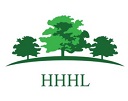



The floral landscape around High Lodge is in constant flux. It has changed over the centuries as man has put the land to different uses. It will continue to change in the future. The flora adjacent to the trail will be significantly different as the trees grow in height creating shady areas where now there is sunlight. As trees are felled and new clearing made, more sun will penetrate to the ground. These continual changes in day light present opportunities for plants not presently found along the trail to grow. These new colonizers may arrive at High Lodge from other locations across Thetford Forest through the agency of insects, birds, mammals and humans accidently transporting seeds to vicinity of the Heritage Trail. Any new additions also will provide a greater source of food for insects, birds and mammals not presently found close to the trail.
Such a changing landscape benefits all living creatures and should continually add to the enjoyment of those walking the Hidden Heritage Trail.
On smaller devices this table will horizontally scroll
| Common Name | Scientific Latin Name | Height | Flowering Season | Comments | Picture |
|---|---|---|---|---|---|
| Coltsfoot | Tussilago farfara | 10 - 25 cm | February to April | Coltsfoot is one of the earliest plants to bloom each year with the flowers appearing some weeks before the hoof-shaped leaves. Coltsfoot is sometimes called ‘Baccy plant’ as the dried leaves can be used as a substitute for tobacco. Traditionally Western and Chinese herbal medicines use Coltsfoot as a remedy for coughs. |
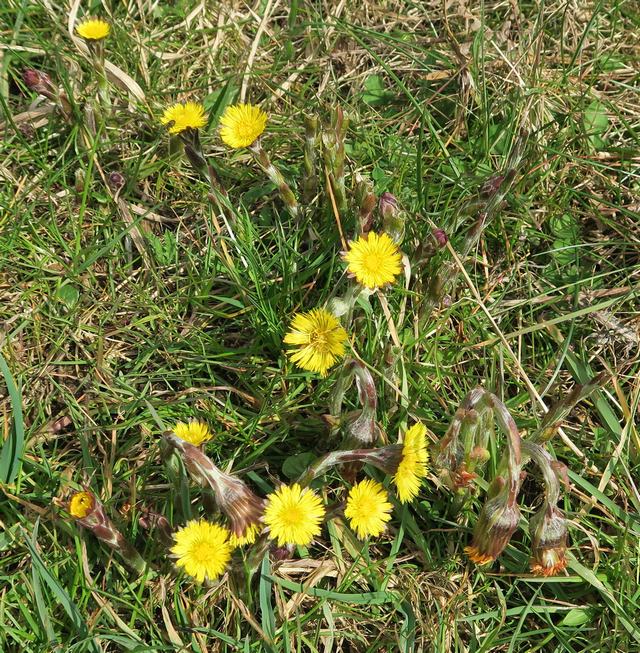
|
| Common Speedwell | Veronica persica | 15 - 30 cm | April to June | The bright blue flowers of Common Speedwell is also known as bird'eye. Common Speedwell is a member of a large family of plants with some of the rarest members found in the Brecks. The tiny Breckland speedwell and the taller Spiked Speedwell are protected plants and presently can only be seen in a very few locations in the Brecks. |
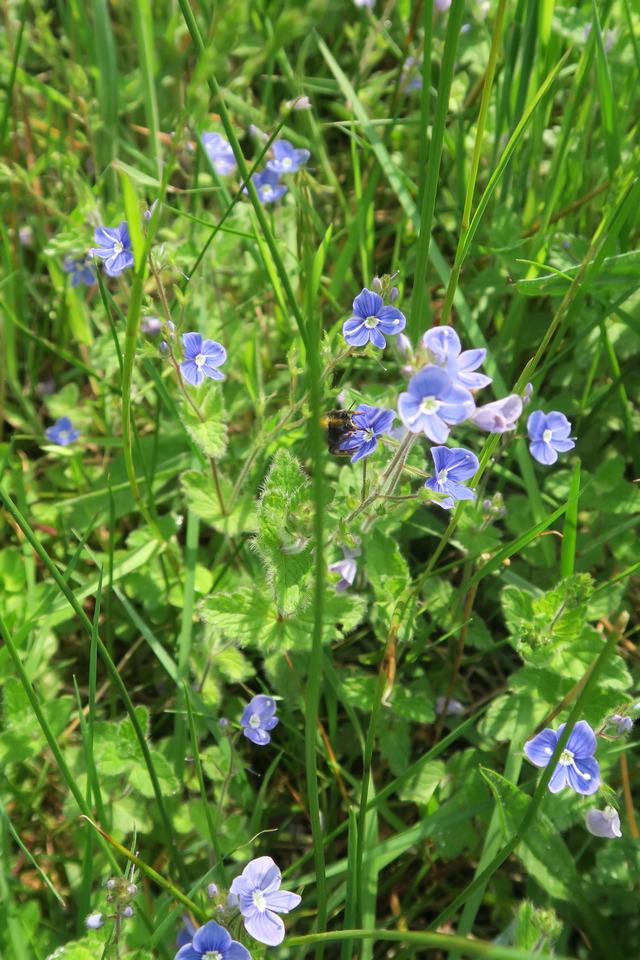
|
| Common Toadflax | Linaria vulgaris | 15 - 90 cm | August to November | Common names include "butter and eggs" or "bunnies lips" |
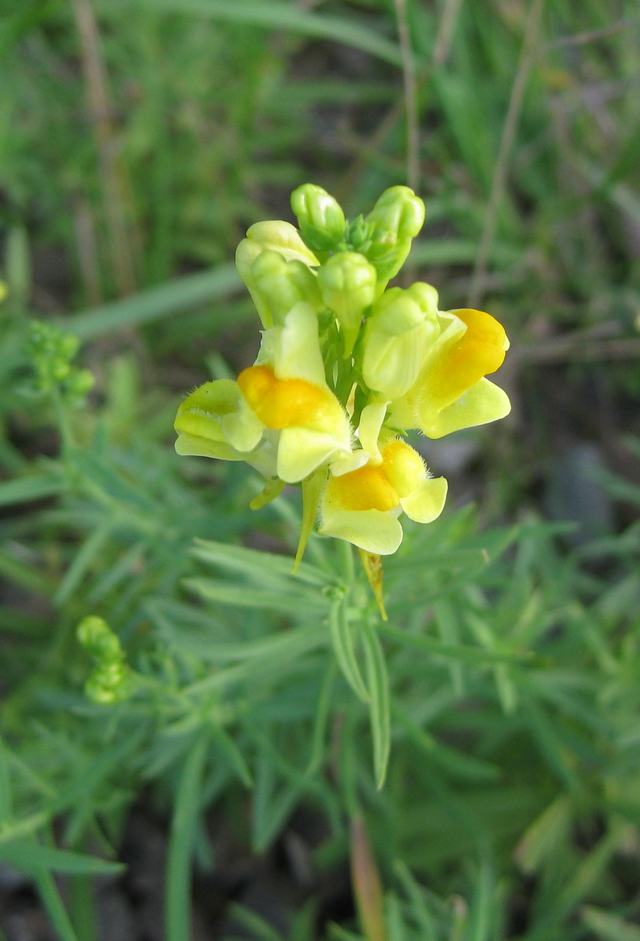
|
| Dark Mullein | Verbascum migrum | 50 - 100 cm | June to September | The Ancient Romans dipped the flowering stalks, stripped of flowers and leaves, into tallow to make candles. Roman ladies infused the yellow flowers in boiling water, added lye (a liquid chemical compound) to dye their hair blonde. Mullein is the food plant of the large, green, yellow and black caterpillar of the Mullein moth. |
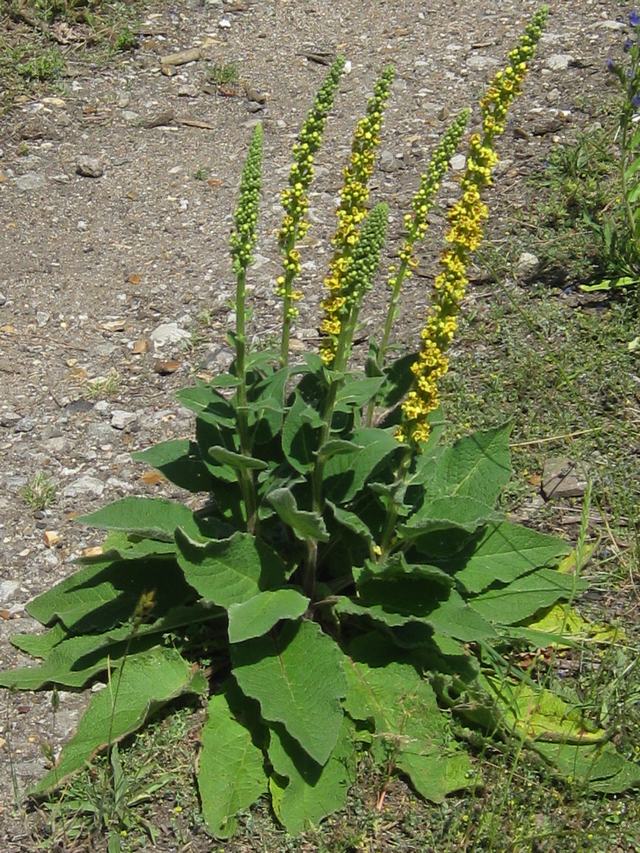
|
| Dog Rose | Rose carnina | 4 metres | June and July | Roses were first cultivated in Iran. From there they spread east to China and west to Europe. Roses are renowned for their wonderful fragrance. Their petals are made into rose water and can be an ingredient of floral perfumes. Petals are used in making jams and jellies, and cakes can be decorated with preserved petals dusted with sugar. Rise hips contain large quantities of vitamin C. During the Second World War they were gathered by the W.I. for the Ministry of Food when citrus fruit was unavailable. The skins of hips make excellent jellies and herbal teas. The oil from the seeds are used to treat scar tissue and in anti-wrinkle creams. |
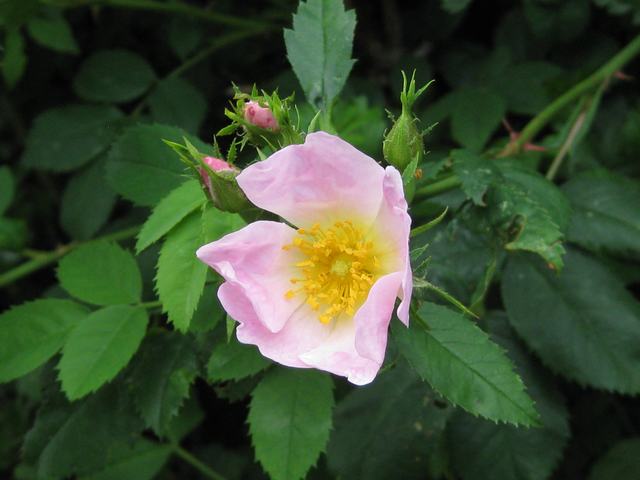
|
| Eyebright | Euphrosia officinalis> | 5 - 45 cm | May to October | The ancient physicians Gallen and Dioscorides believed that if a plant looked like a part of a body, then that plant would cure illness affecting that area of the body. Eyebright, with its yellow and purple markings, was thought to resemble a human eye and could be used to cure eye infections. Eyebright is semi-parasitic on grasses and other plants. |

|
| Honeysuckle | Lonicera periclymenum | 6 meters | May to July | There are many sub-species of honeysuckle with flowers varying from pale cream to dark pink. The scent of the honeysuckle is strongest at night attracting a wealth of moths. Woodland butterflies rely on the plant to provide them with nectar during the day. Honeysuckle stems flowers are used in a wild range of treatments including rheumatoid arthritis, mumps and hepatitus. Pneumonia and dysentery. Another name for Honeysuckle is Woodbine. |

|
| Hound's-tongue | Cynoglossum officinale | 25 - 50 cm | May to August | It is the shape of the leaves that give Hound's-tongue its name. In traditional medicines the plant was used to cure the bite of mad dogs, and if leaves were placed in the shoe, they prevented dog bites! In modern medicine, Hound's-tongue is used to relieve piles. |
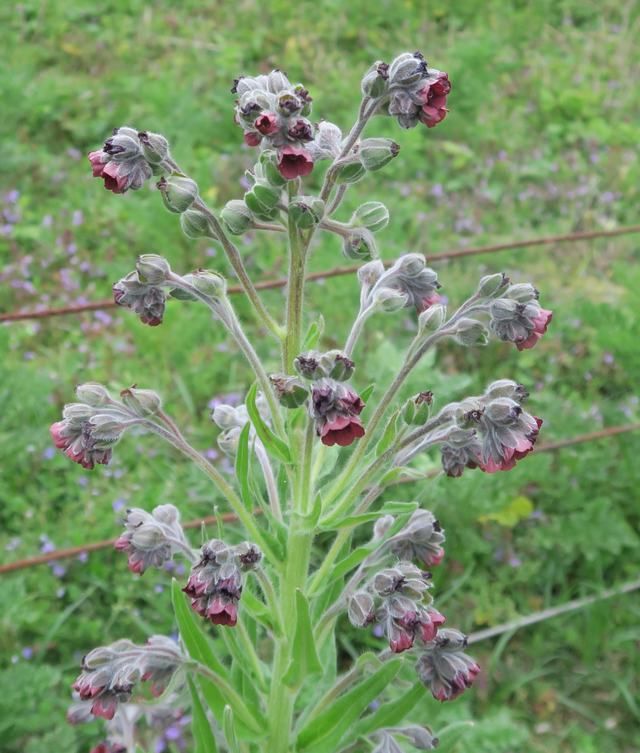
|
| Ivy | Hedera Helix | 30 metres | September to November | Using Ivy as a winter decoration in homes and public buildings stretching back to Roman times. It was associated with Bacchus the god of wine and revelry. From late summer to early winter, the flowers of the Ivy attract large numbers of insects. It is common to see butterflies, bees, wasps, hoverflies and all kinds of blue bottles nectaring on the greeny-yellow flowers. |
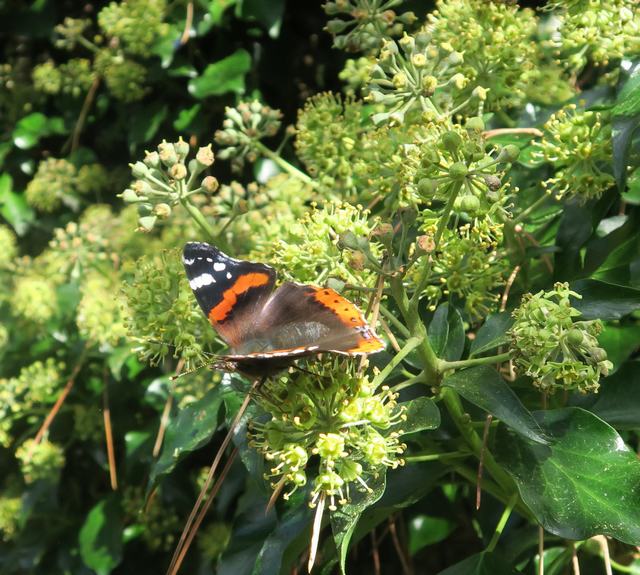
|
| Wild Parsnip | Pastinca sativa | 30 - 100 cm | July to September | As well as being a winter vegetable, parsnips have been used to cure all manner of ailments from toothache, lung complaints and as an aid to digestion. The seeds were used as a spice to cure bladder problems. The yellow flower heads are a magnet for the red net-winged beetles who gorge on the nectar. |
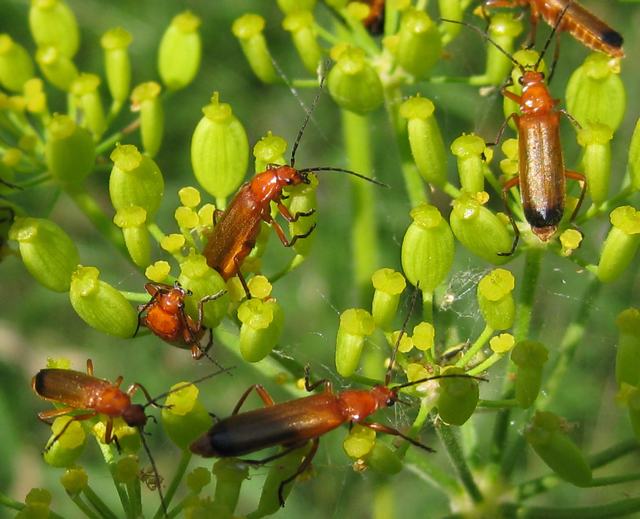
|
| Oregon Grape | Mahonia aquifolium | 1 metre | March to May | Oregon Grape grows wild along the Pacific coast of North America. The plants found in Thetford Forest orignate from garden-escapees. The bright yellow flowers in early spring, and the bright shiny leaves attract butterflies and other insects. In autumn the leaves turn bronze and bunches black-blue grape-like fruits appear. These fruits can be fermented and made into wine. The roots are used in herbal medicine to stimulate the liver. |

|
| Wild Thyme | thymus serpyllum | 2 cm /td> | July to September | Wild Thyme forms bright purple, aromatic mats on open ground in the Brecks. The flowers attract bees in their dozens to collect the nectar for honey. The plant has been used for both culinary and for boquets since mediaeval times. |
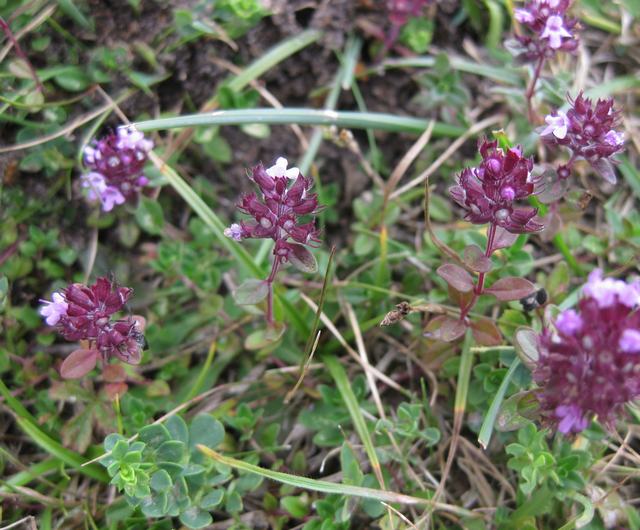
|
| Yellow Rattle | Rhinanthus minor | 25 - 50 cm | May to September | Yellow Rattle is a parasite. It feeds on the roots of grasses weakening them allowing other wild flowers to thrive. It is particularly useful when establishing a wild flower meadow. The leaves can be used to produce a yellow dye. The plant is named after the seeds that once dry, rattle in their pods. |

|